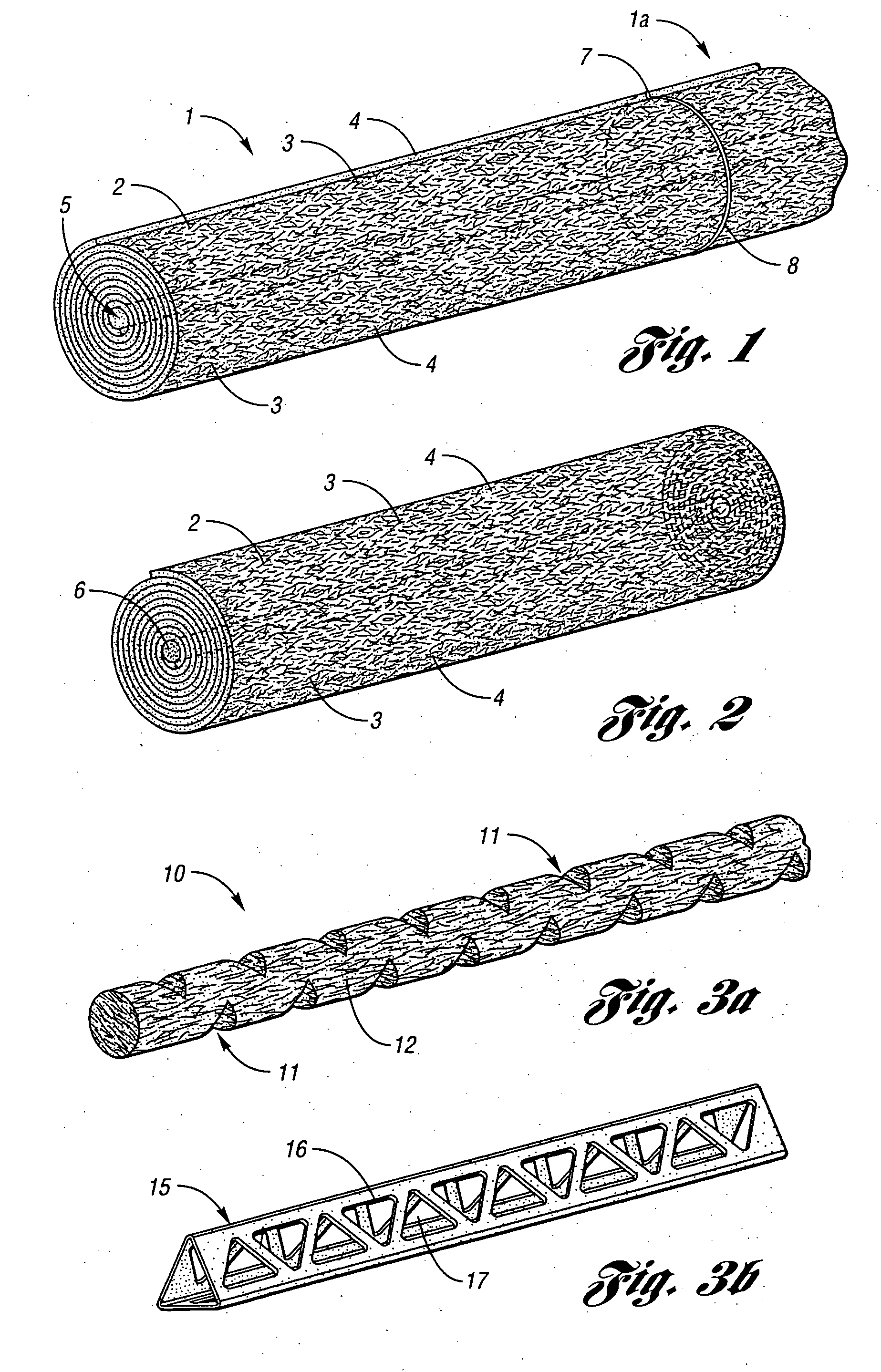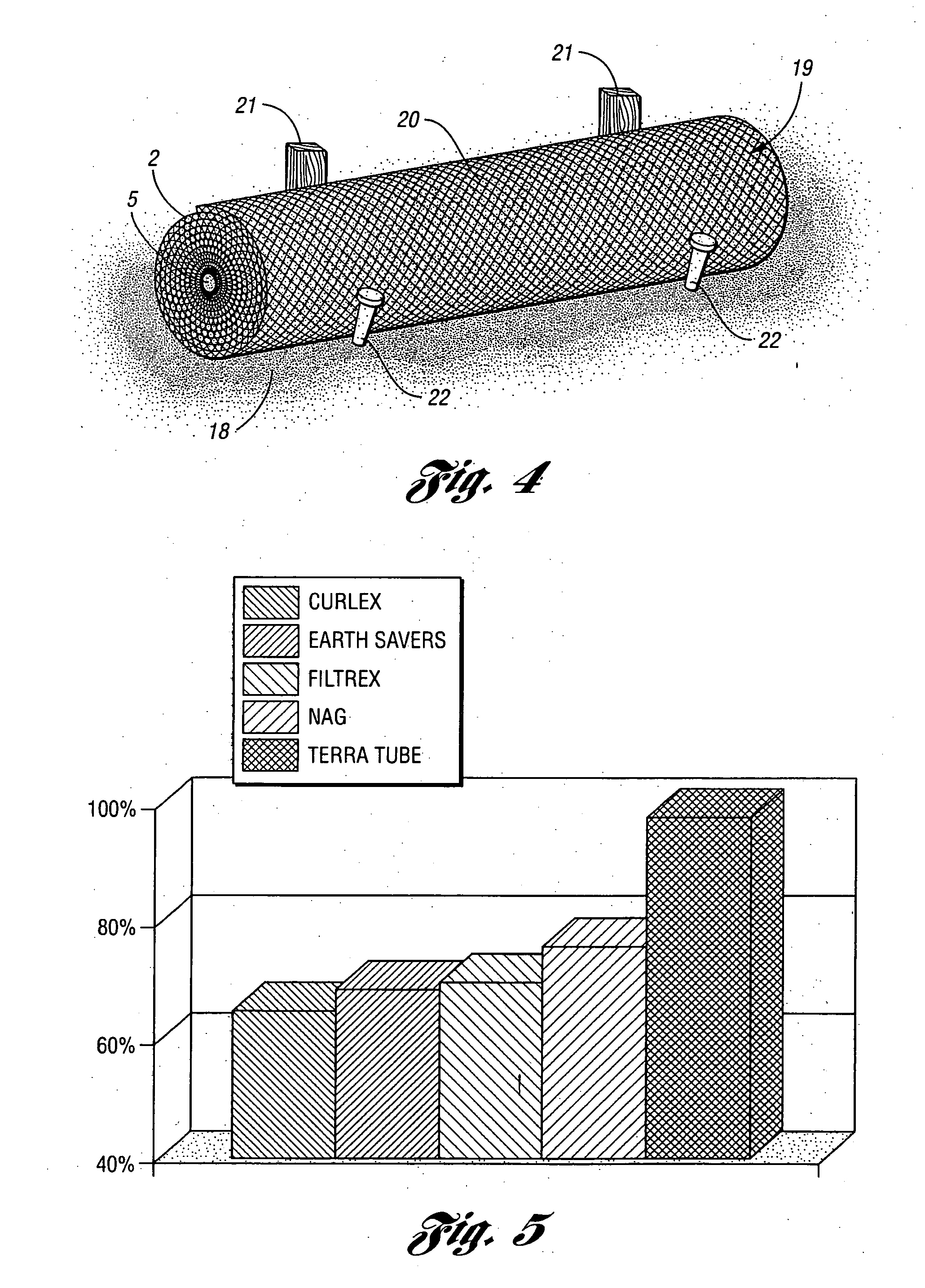Mandrel-wound flocculant-containing fiber filtration tubes
a fiber filtration tube and flocculant technology, applied in the field of fiber filtration tubes, can solve the problems of high cost of polymer-based binders, the defect of rapid degradation of natural or chemically modified natural binders, and the rapid loss of their ability to control run-off, so as to achieve a high degree of sediment control
- Summary
- Abstract
- Description
- Claims
- Application Information
AI Technical Summary
Benefits of technology
Problems solved by technology
Method used
Image
Examples
example 1
[0079] A netless fiber mulch mat product is prepared by admixing in an air stream, 93 parts by weight of wood fibers prepared from pine and / or mixed wood species, 35% of which collect on a #8 sieve, and having an average length of about 0.75 inches (Profile Products thermally refined wood fiber), and 7% of synthetic fibers. The synthetic fibers constitute about 15% bicomponent staple fibers having a length of 2 inches (5 cm) and a polyester core and polyethylene sheath, available from Leigh Fibers, and about 85% polypropylene staple fibers, 1.5 inches average length, from Synthetic Industries, supplied separately. The fibers are deposited on a moving fiberglass belt of 84 inch (2.13 m) width in a thickness of about 0.62 inch and at a minimal width of about 82 inches and are preliminarily heated under a set of radiant panels which provide a strong surface bond to the bicomponent and polypropylene fibers, and then pass through two heated rollers having a length of 100 inches and diame...
example 2
[0080] In a manner similar to Example 1, a product is prepared from a batt of 91% classified pine wood fibers, 32.5-40% of which collect on a standard ASTM #8 sieve, and 9% of bicomponent fibers with a polyester core and polyolefin sheath with a sheath melting temperature of 110° C., average lengths between 2-3 inches (5-7.6 cm), and a denier of 15. The batt is consolidated as in Example 1 to a finished product which has a nominal areal weight of 0.29 lbs / yd2 (110 g / m2).
[0081] Prior to consolidation, the mat, slightly greater than ⅜ inch (9.5 mm) in thickness, is heated by radiant heating. The batt surface temperature is initially becomes 275° F. (135° C.) and as the batt traverses below the radiant heat panels, the temperature increases to about 420° F. (216° C.) at the end of the heating cycle. No heat is applied for about 4 seconds as the traveling batt continues towards the consolidating rollers. The rollers are maintained a distance apart so as to produce modest compression an...
PUM
 Login to View More
Login to View More Abstract
Description
Claims
Application Information
 Login to View More
Login to View More - R&D
- Intellectual Property
- Life Sciences
- Materials
- Tech Scout
- Unparalleled Data Quality
- Higher Quality Content
- 60% Fewer Hallucinations
Browse by: Latest US Patents, China's latest patents, Technical Efficacy Thesaurus, Application Domain, Technology Topic, Popular Technical Reports.
© 2025 PatSnap. All rights reserved.Legal|Privacy policy|Modern Slavery Act Transparency Statement|Sitemap|About US| Contact US: help@patsnap.com



